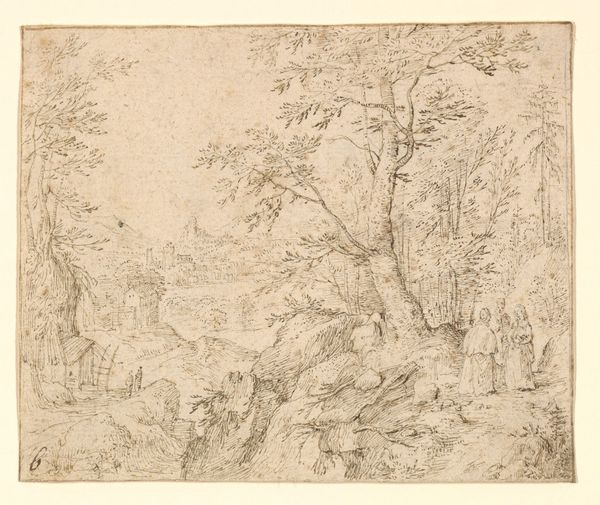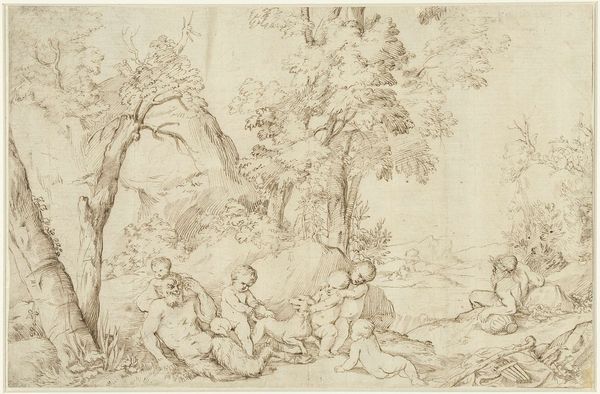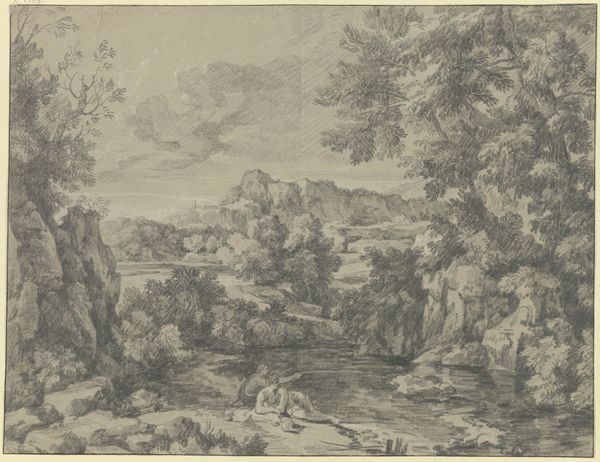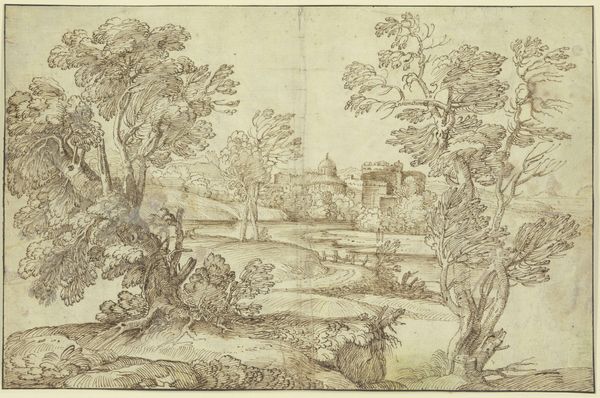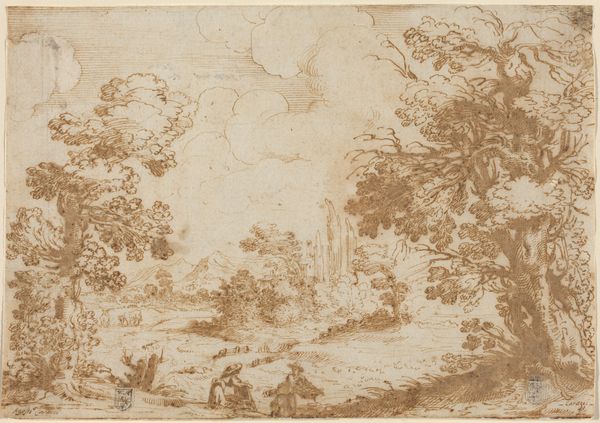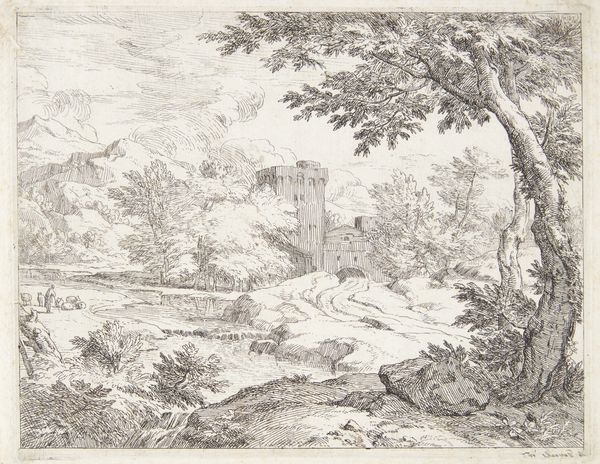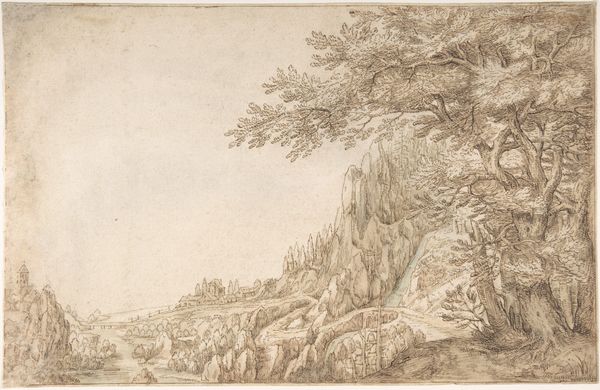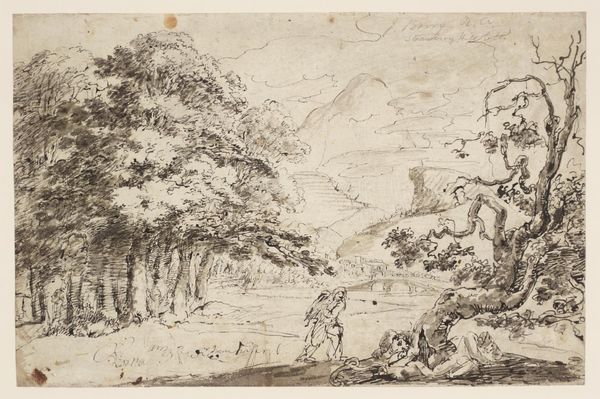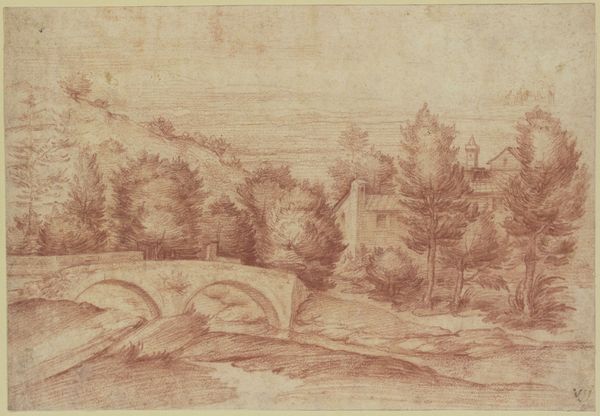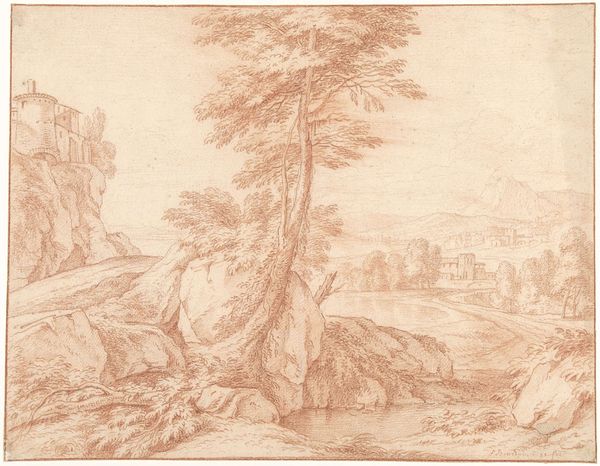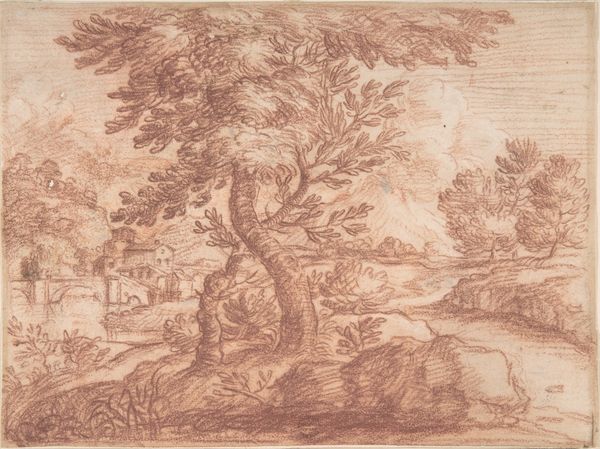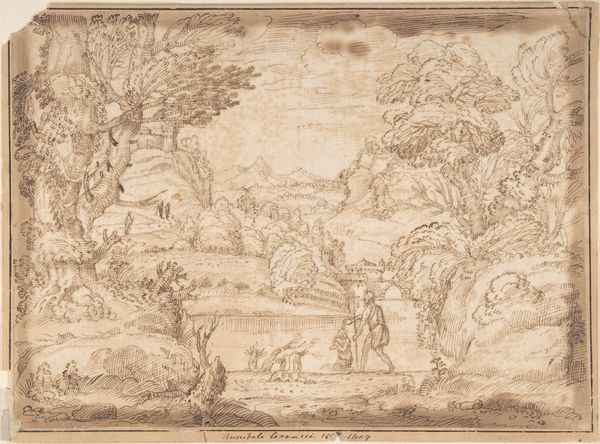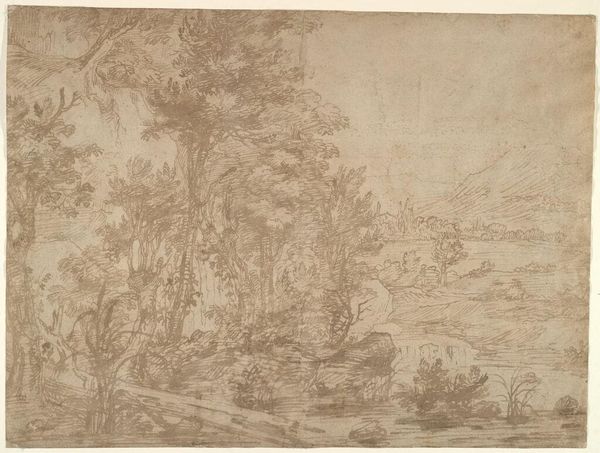
Zuidelijk landschap met een brug over een rivier c. 1610 - 1649
0:00
0:00
drawing, print, etching, intaglio, pen
#
drawing
#
baroque
#
ink painting
# print
#
etching
#
intaglio
#
pencil sketch
#
landscape
#
etching
#
pen work
#
pen
Dimensions: height 167 mm, width 257 mm
Copyright: Rijks Museum: Open Domain
Curator: This is Herman van Swanevelt’s “Southern Landscape with a Bridge over a River," an etching executed sometime between 1610 and 1649. Editor: It's evocative, immediately establishing a mood of serene distance, the world softened by time and technique. I notice the meticulous lines forming the water's reflection; it all feels dreamlike and yet remarkably tangible. Curator: Absolutely. Etching lent itself well to the airy and luminous landscapes that were so fashionable in the Baroque period. There’s a delicate balance of shadow and light created by the intricate linework. Think about how the bridge functions—it not only connects space within the composition, but also people who lived on opposite sides of the river. Editor: But who has access? The location atop the hill recalls social divides still shaping landscape today. Observe the church—a clear marker of established power—perched above. Even as nature dominates the vista, the social hierarchy subtly manifests. Curator: Interesting. We tend to think of landscape as devoid of such loaded meaning. But consider the bridge: it's both a physical structure and a symbol. Bridges are commonly read as connection, transitions, and even hope. Van Swanevelt likely meant to suggest a peaceful unity. Editor: Peaceful perhaps for some. In Swanevelt’s era, who traversed those routes and with what degree of freedom? Landscape depictions often overlooked those burdened by class and race. So how truly unified was this era when freedom was extremely conditional? Curator: I agree that those contexts are extremely relevant. Looking at the work from a symbolic view, the artist’s own life and his travels also come to mind, suggesting themes of journey and observation. Editor: Well said. His travels undoubtedly framed what he chose to include and how he portrayed the era—revealing even unintended social commentaries. Food for thought about who controls the image-making machinery. Curator: This piece exemplifies the complex layers within seemingly straightforward scenes. It resonates across eras, prompting us to see beyond the pretty facade and question societal narratives. Editor: Precisely, it is our task today to question the past, allowing history to spark vital discussions regarding modern inequalities, just as clearly highlighted by visual artistry from centuries ago.
Comments
No comments
Be the first to comment and join the conversation on the ultimate creative platform.
